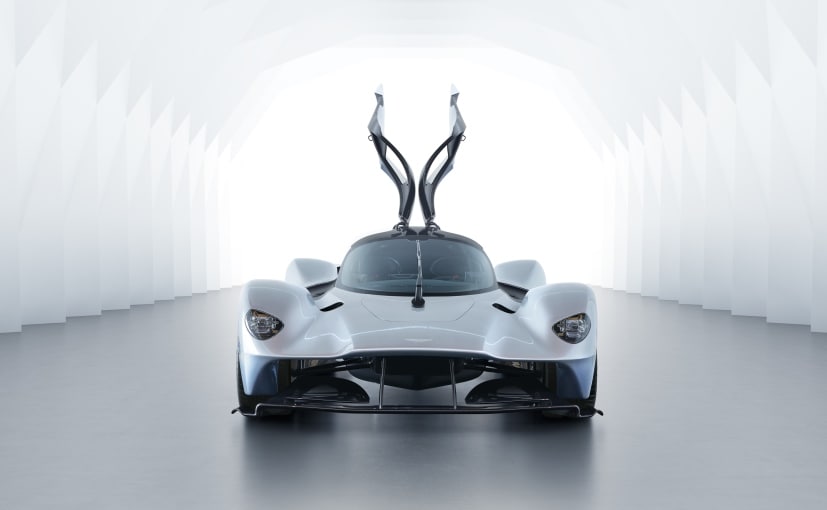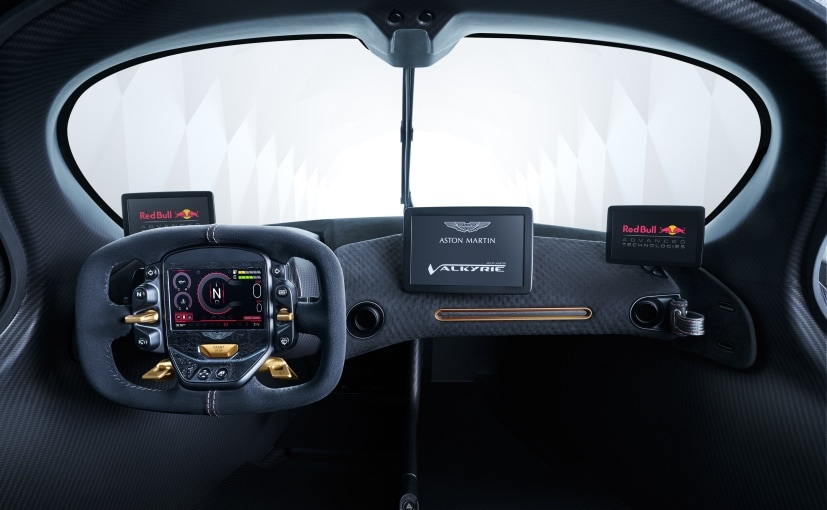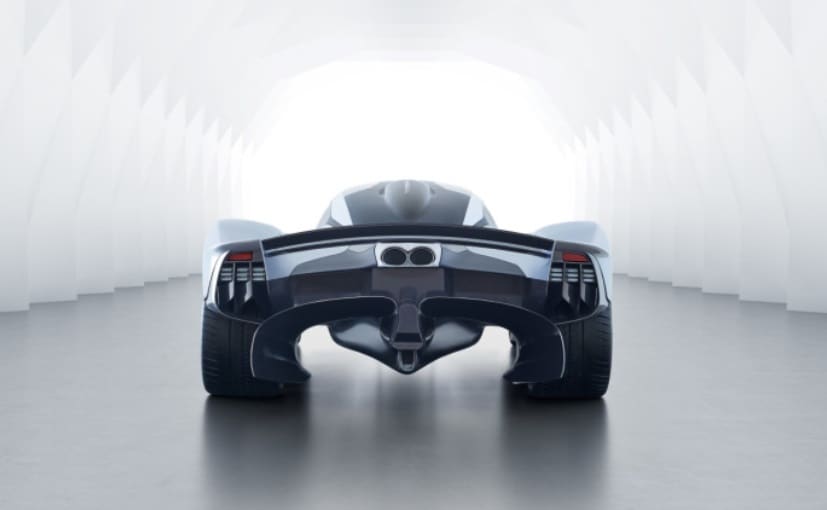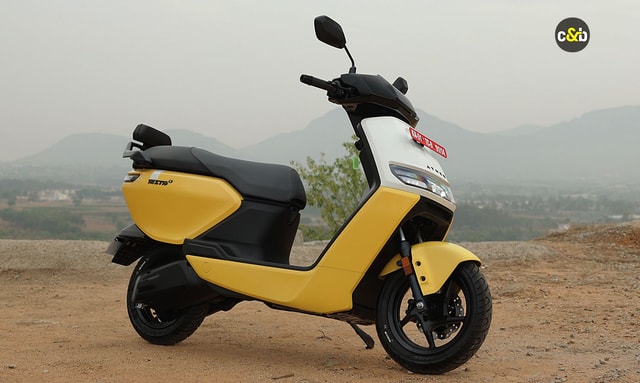How Aston Martin Managed To Save Weight On The Valkyrie Hypercar

- The Aston Martin Valkyrie swaps rear view mirrors for cameras
- The Valkyrie uses a laser-etched AM badge that is just 70 microns thick
- The seat paddings are directly bolted to the floor to save weight
1. Lights
Compared to the original RB-001 concept, the Aston Martin Valkyrie's most noticeable change are the headlamps. They are designed to be as aerodynamic as possible, but the company also claims that it is around 30 to 40 per cent lighter than any other light in its line-up. If that's not all, the centre brake light on the Valkyrie is pretty incredible. Aston says it has developed the world's smallest centre high-mounted stop lamp (CHMSL), an LED unit which is barley 0.2 inch wide and 0.4 inch tall, integrated into a central spine at the rear of the cockpit. Apart from being extremely aerodynamic, it is also extremely light. Well, don't be surprised because this is hardly the most complex components on this hyper car.
2. No Rear View Mirrors

The Valkyrie replaces conventional mirrors with cameras to provide rear view
The Aston Martin Valkyrie is road legal and thanks to the new laws in the UK, the hyper car can now use a camera system to replace the conventional Outside Rear View Mirrors (ORVMs). So, what you now gets are two extremely light camera mounted in place of the ORVM unis and feed the OLED screens inside the cabin. Also missing a inside rear view mirror (IRVM) on the Valkyrie. The cell design and the roof-mounted air intake runs down on where the rear window would be placed, and effectively replaces the need for a rear view mirror.
3. Badge Thinner Than The Human Hair

The standard AM badge was just too heavy for the Valkyrie
Aston Martin has been so obsessed on the weight savings that the standard company badge was just too heavy, while the stick just didn't seem to keep up with the company standards. Instead, the British automaker chose to get a laser-etched badge instead made of aluminium that's just 70 microns thick. For perspective, the average human hair is 100 microns thick. The weight saving you ask? A whole 99.4 per cent over the standard Aston Martin badge.
4. Seats

The padding is stuck directly to the sculpted tub on the Valkyrie
The Valkyrie's cabin won't match up to the leather induced interiors of standard Aston Martin offerings. But this is a different beast altogether and the cabin is nothing less than a race car. It's carbon fibre everywhere to keep the weight low and structural rigidity high. The seats are bolted directly to the floor and passengers sit reclined with their feet slightly raised, which is like in Formula 1 and Le Mans prototype race cars. If you are a tall driver, padding is stuck directly to the sculpted tub.
That's a lot of technology for a car that will make only a handful happy and extremely lucky as well. Aston is betting a lot on its newest creation and say that what we see is 95 per cent of the actual design that will make it to production. The production spec model's unveil is slated for 2018 and that's when we expect the actual power figures from the V12 with KERS technology to be revealed then. For what will be a $3 million worth hyper car, we can't wait to know more about the Valkyrie.
Trending News
Latest News
 car&bike Team | Dec 12, 2025Nissan Entry MPV Design To Be Unveiled On December 18New MPV to be the first of three new models for India by Nissan, alongside the Tekton and a three-row SUV.1 min read
car&bike Team | Dec 12, 2025Nissan Entry MPV Design To Be Unveiled On December 18New MPV to be the first of three new models for India by Nissan, alongside the Tekton and a three-row SUV.1 min read Jaiveer Mehra | Dec 12, 2025New Mini Convertible Launched At Rs 58.50 LakhDrop-top variant of the iconic Cooper hatchback available in a single Cooper S spec.1 min read
Jaiveer Mehra | Dec 12, 2025New Mini Convertible Launched At Rs 58.50 LakhDrop-top variant of the iconic Cooper hatchback available in a single Cooper S spec.1 min read car&bike Team | Dec 12, 2025Mahindra XUV 7XO Pre-Bookings Open December 15The mid-cycle update to the XUV 700, the XUV 7XO, is set to borrow design elements and tech from the new Mahindra XEV 9S.2 mins read
car&bike Team | Dec 12, 2025Mahindra XUV 7XO Pre-Bookings Open December 15The mid-cycle update to the XUV 700, the XUV 7XO, is set to borrow design elements and tech from the new Mahindra XEV 9S.2 mins read Jafar Rizvi | Dec 12, 2025New Kia Seltos vs Maruti Suzuki Victoris: Dimensions, Engines, Features ComparedThe Seltos has long ruled the Indian market, and now it arrives with a fresh design inside and out. But, how does it compare with Maruti Suzuki’s newly launched compact SUV, the Victoris? Let’s find out.1 min read
Jafar Rizvi | Dec 12, 2025New Kia Seltos vs Maruti Suzuki Victoris: Dimensions, Engines, Features ComparedThe Seltos has long ruled the Indian market, and now it arrives with a fresh design inside and out. But, how does it compare with Maruti Suzuki’s newly launched compact SUV, the Victoris? Let’s find out.1 min read Seshan Vijayraghvan | Dec 11, 2025New MINI Cooper Convertible India Launch TomorrowThe MINI Cooper S Convertible gets a a 2.0-litre twin turbo petrol engine that makes 201 bhp and 300 Nm of peak torque.1 min read
Seshan Vijayraghvan | Dec 11, 2025New MINI Cooper Convertible India Launch TomorrowThe MINI Cooper S Convertible gets a a 2.0-litre twin turbo petrol engine that makes 201 bhp and 300 Nm of peak torque.1 min read car&bike Team | Dec 11, 2025Ather Rizta Sales Cross 2 Lakh Unit MilestoneMilestone arrives within 2 years of the scooter’s launch in April 2024.1 min read
car&bike Team | Dec 11, 2025Ather Rizta Sales Cross 2 Lakh Unit MilestoneMilestone arrives within 2 years of the scooter’s launch in April 2024.1 min read
 Janak Sorap | Dec 11, 2025Harley-Davidson X440 T First Ride Review: Smarter and SharperHarley-Davidson has taken the X440 and given it a more focused and engaging twist. The result is the X440 T—essentially the same platform but updated in areas that give the motorcycle more appeal and riders more thrill.5 mins read
Janak Sorap | Dec 11, 2025Harley-Davidson X440 T First Ride Review: Smarter and SharperHarley-Davidson has taken the X440 and given it a more focused and engaging twist. The result is the X440 T—essentially the same platform but updated in areas that give the motorcycle more appeal and riders more thrill.5 mins read Shams Raza Naqvi | Dec 10, 20252025 Mini Cooper Convertible Review: More Colour On Indian RoadsThe updated Mini Cooper Convertible is set to be launched in the Indian market in the next few days. We drive it around Jaisalmer for a quick review.1 min read
Shams Raza Naqvi | Dec 10, 20252025 Mini Cooper Convertible Review: More Colour On Indian RoadsThe updated Mini Cooper Convertible is set to be launched in the Indian market in the next few days. We drive it around Jaisalmer for a quick review.1 min read Bilal Firfiray | Dec 8, 2025Tata Sierra Review: India’s New Favourite?Marking its return after a few decades, the reborn Sierra has made everyone sit up and take notice. But is it worth the hype?10 mins read
Bilal Firfiray | Dec 8, 2025Tata Sierra Review: India’s New Favourite?Marking its return after a few decades, the reborn Sierra has made everyone sit up and take notice. But is it worth the hype?10 mins read Girish Karkera | Dec 4, 20252026 Honda Prelude First Drive: Domesticated Civic Type RA sporty-looking coupe built to give customers a taste of performance but not at the expense of everyday practicality.5 mins read
Girish Karkera | Dec 4, 20252026 Honda Prelude First Drive: Domesticated Civic Type RA sporty-looking coupe built to give customers a taste of performance but not at the expense of everyday practicality.5 mins read Seshan Vijayraghvan | Nov 29, 2025Mahindra XEV 9S First Drive Review: Big Electric SUV, Bigger ExpectationsThe XEV 9S lands at a time when the EV crowd is growing fast. It’s a big, born-electric, three-row SUV that starts under 20 lakh. It sits close to the XUV700 in size, but the brief is very different. Here’s what it’s like on the road.11 mins read
Seshan Vijayraghvan | Nov 29, 2025Mahindra XEV 9S First Drive Review: Big Electric SUV, Bigger ExpectationsThe XEV 9S lands at a time when the EV crowd is growing fast. It’s a big, born-electric, three-row SUV that starts under 20 lakh. It sits close to the XUV700 in size, but the brief is very different. Here’s what it’s like on the road.11 mins read




































































































































